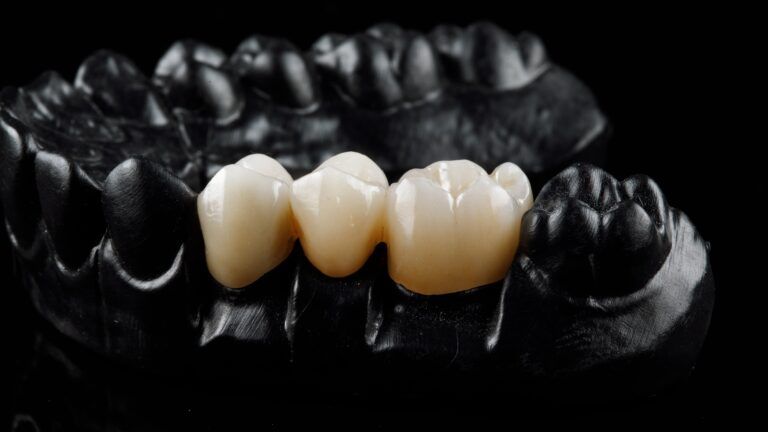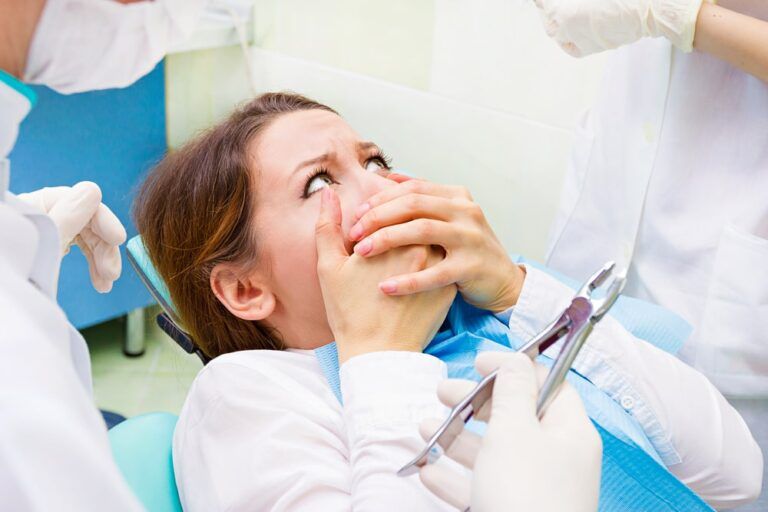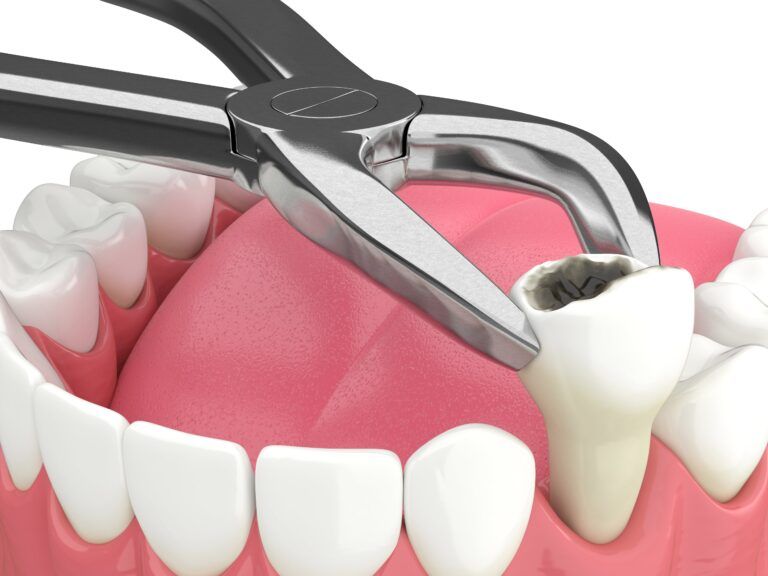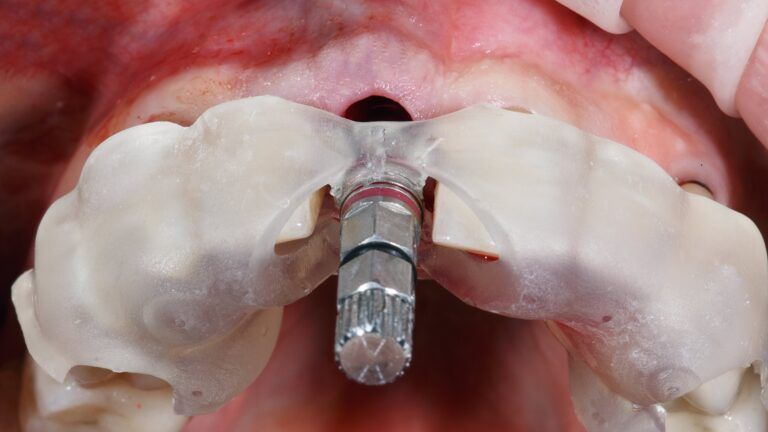Aesthetic dental restorations play a crucial role in enhancing smiles and boosting patients’ confidence. One of the key factors that contribute to successful aesthetic outcomes is color matching. In this blog, we will delve into the significance of color matching in aesthetic dental restorations and highlight its importance in achieving optimal results.
Understanding Color in Dentistry:
Color perception holds immense value in dentistry. By understanding the basic principles of color science, dental professionals can create restorations that seamlessly blend with natural teeth. Concepts such as hue, value, and chroma, as well as the impact of lighting on color perception, help guide the color matching process.
In the realm of dental restorations, understanding the concepts of hue, value, translucency, and chroma is crucial for accurate color perception. These factors play a significant role in replicating natural tooth color and achieving optimal aesthetic outcomes. Let’s explore how each of these concepts influences color perception in dental restorations.

- Hue: Hue refers to the basic color of an object. In dental restorations, it represents the predominant color of the tooth. Teeth can have various hues, ranging from yellowish to grayish or reddish. Understanding the underlying hue of a patient’s natural teeth is essential for selecting the appropriate shade and achieving a seamless color match in restorations.
- Value: Value refers to the lightness or darkness of a color. In dental restorations, it determines the brightness or shade of the tooth color. Teeth exhibit a range of values, with the incisal or biting edge being generally lighter and the cervical or gum area appearing darker. Accurate replication of the value is crucial for achieving a natural-looking restoration that blends seamlessly with the adjacent teeth.
- Translucency: Translucency is the degree to which light passes through an object. In dental restorations, it refers to the ability of the restoration material to mimic the translucency of natural teeth. Natural teeth possess varying levels of translucency, which allows light to pass through and reflect off the underlying tooth structure. Replicating this translucency in restorations is essential for achieving a lifelike appearance and ensuring that the restoration interacts with light in a similar manner to the natural teeth.
- Chroma: Chroma refers to the intensity or saturation of a color. In dental restorations, it represents the amount of pigment present in the tooth color. Natural teeth exhibit a range of chroma, with some teeth having more vibrant or intense colors than others. Accurate replication of chroma is crucial to avoid creating restorations that appear flat or artificial. Matching the chroma of natural teeth in restorations ensures a harmonious blend and enhances the overall aesthetic outcome.
Understanding how these concepts interplay is essential for achieving accurate color perception in dental restorations. Dental professionals utilize shade guides, colorimeters, and digital shade matching systems to assess and select the most suitable hue, value, translucency, and chroma for restorations. Additionally, factors like lighting conditions and metamerism (color changes under different light sources) must be considered to ensure consistent color perception both in the dental office and under various lighting environments encountered by patients.
Challenges in Color Matching:
Color matching dental restorations presents unique challenges due to the complex nature of replicating natural tooth color. Some of the common challenges include:

- Natural Variations in Tooth Color: Each individual has a unique tooth color influenced by genetics, age, and lifestyle factors. Replicating these variations accurately can be challenging, especially when dealing with adjacent teeth that may differ in shade and color.
- Shade Selection: Choosing the correct shade for a dental restoration is a critical step in achieving a natural-looking result. However, shade selection can be subjective and dependent on factors such as lighting conditions, the color perception of both the dentist and the patient, and the accuracy of shade guides or digital shade matching systems.
- Color Stability of Restorative Materials: Restorative materials, such as composite resins and ceramics, can exhibit changes in color over time due to factors like aging, staining, or exposure to certain foods and beverages. Ensuring color stability in restorations is essential for maintaining long-term aesthetic results.
- Metamerism: Metamerism refers to the phenomenon where two objects may appear to match under certain lighting conditions but show a noticeable difference in color under different lighting sources. This can make it challenging to achieve consistent color matching, as the appearance of restorations may vary depending on the lighting environment encountered by the patient.
- Limited Shade Options: Although shade guides offer a wide range of options, there may be instances where the desired shade falls outside the available options. This limitation can make it difficult to achieve an exact color match, requiring the dental professional to employ creative techniques or collaborate with dental laboratories to custom create the desired shade.
- Interference from Existing Restorations: When replacing or matching restorations in a patient’s mouth, existing restorations can pose challenges in achieving color harmony. Different materials, ages, and shades of existing restorations can impact the final color perception and require careful consideration and skillful blending.
- Patient Expectations: Each patient has their own perception of what constitutes a satisfactory color match. Managing patient expectations and effectively communicating the limitations of color matching can be challenging, as patients may have unrealistic or idealized expectations that cannot be fully met.
Addressing these challenges requires a combination of expertise, technical skill, and the utilization of advanced technologies for accurate color matching. Continuous education and training in color theory, shade selection, and understanding the capabilities and limitations of restorative materials can assist dental professionals in overcoming these challenges and achieving optimal color matching results in dental restorations.
Importance of Color Matching in Aesthetic Dental Restorations:
Color matching is of utmost importance in aesthetic dental restorations for several compelling reasons:
- Psychological Impact on Patients: The appearance of one’s smile can have a significant impact on self-esteem and confidence. Aesthetic dental restorations aim to create natural-looking results that seamlessly blend with the surrounding dentition. Accurate color matching ensures that the restorations appear indistinguishable from natural teeth, enhancing the patient’s sense of self-confidence and overall satisfaction with their smile.
- Improved Patient Satisfaction and Acceptance: When dental restorations perfectly match the color of natural teeth, they create a sense of harmony and balance in the smile. Patients tend to be more satisfied and accepting of restorations that blend seamlessly with their existing dentition. Accurate color matching helps minimize the visibility of restorations, allowing patients to feel more comfortable and confident in their appearance.
- Professional Reputation and Success: Dental professionals who consistently achieve high-quality aesthetic outcomes gain a reputation for their skill and attention to detail. Positive patient experiences and satisfaction with color-matched restorations often result in referrals and recommendations, contributing to the growth and success of a dental practice. The ability to provide superior aesthetic results can differentiate a dentist from their competitors and attract new patients seeking expert cosmetic dentistry.
- Natural Aesthetics: Natural teeth exhibit a range of colors, shades, and translucencies. Accurate color matching ensures that restorations mimic these natural variations, creating a lifelike appearance. When restorations closely resemble natural teeth, they seamlessly integrate into the smile, avoiding the “artificial” or “fake” look that can occur with poorly matched restorations.
- Long-Term Durability: Dental restorations that accurately match the color of natural teeth tend to have better longevity. Color stability and resistance to staining are critical factors in maintaining the aesthetic appeal of restorations over time. Proper color matching reduces the likelihood of color changes, ensuring that the restorations maintain their natural appearance and quality over the long term.
- Patient Communication and Expectations: Accurate color matching facilitates effective communication between the dental professional and the patient. When patients see that their dentist can replicate the color of their natural teeth in restorations, it fosters trust and confidence in the dentist’s abilities. Clear communication about the color-matching process and managing patient expectations are essential for achieving satisfying outcomes and avoiding potential disappointments.
In summary, color matching is essential in aesthetic dental restorations for its significant impact on patient psychology, satisfaction, and overall success of the dental practice. By achieving natural aesthetics and harmonious integration with the existing dentition, dental professionals can enhance their patients’ confidence and well-being while establishing a reputation for delivering exceptional cosmetic dentistry.
Techniques and Technologies for Color Matching:
Advancements in dental technology have significantly improved color matching outcomes in aesthetic dental restorations. These advancements have provided dental professionals with more precise and reliable tools and techniques for achieving accurate color replication. Here are some ways dental technology has contributed to improving color matching outcomes:

- Digital Shade Matching Systems: Digital shade matching systems use advanced imaging technology to capture and analyze the color of natural teeth. These systems provide objective measurements of hue, value, and chroma, minimizing subjective interpretation and improving the accuracy of shade selection. Digital shade matching systems also allow for the comparison of multiple shades and provide a digital record of the selected shade, enhancing consistency and facilitating communication with dental laboratories.
- Spectrophotometry: Spectrophotometers are devices that measure the reflectance and absorption of light by an object. In dental restorations, spectrophotometers can accurately analyze the color of natural teeth and compare it to shade guides or existing restorations. This technology enables precise color measurement and helps dental professionals select the most appropriate shade for restorations.
- High-Quality Shade Guides: Shade guides are essential tools for color matching, and advancements in their design and manufacturing have improved color matching outcomes. Modern shade guides are meticulously crafted with a wider range of shades and translucencies, more accurately representing the natural variations found in teeth. These guides aid in shade selection and provide a reference for dental professionals during the color matching process.
- Improved Dental Materials: Dental materials, such as composite resins and ceramics, have seen significant advancements in their color stability and optical properties. Modern restorative materials are designed to closely mimic the properties of natural teeth, including translucency, fluorescence, and light scattering. These materials contribute to more lifelike restorations and help dental professionals achieve better color matching results.
- Enhanced Lighting Conditions: Proper lighting conditions are crucial for accurate color perception. Dental clinics now have access to specialized dental lighting systems that provide consistent and standardized lighting conditions for shade matching. These lighting systems replicate natural daylight, reducing the potential for color distortion and improving the accuracy of color matching.
- Continued Education and Training: The advancements in dental technology necessitate ongoing education and training for dental professionals to effectively utilize these tools and techniques. Hands-on workshops and courses focused on color theory, shade selection, and utilizing dental technology for color matching empower dental professionals to achieve optimal outcomes.
By incorporating these technological advancements into their practice and staying updated with the latest developments, dental professionals can enhance their ability to achieve accurate and consistent color matching in aesthetic dental restorations. These advancements contribute to improved patient satisfaction, enhanced aesthetics, and the overall success of the dental practice.
In Conclusion:
Color matching plays a pivotal role in the success of aesthetic dental restorations. By understanding the science behind color perception and implementing accurate color matching techniques, dental professionals can enhance patient satisfaction and their own professional reputation. Prioritizing color matching in dental practices leads to improved aesthetic outcomes and fosters positive patient experiences. With continual education and the utilization of advanced technologies, dental professionals can ensure that their restorations blend seamlessly with natural teeth, creating beautiful smiles and confident patients.

Irfan Atcha, DDS, DICOI, DADIA at New Teeth Chicago Dental in Chicago, Illinois is a board-certified general dentist and a nationally recognized expert in dental implants, cosmetic dentistry, and sedation dentistry. Dr. Atcha is now serving patients in Naples, Bonita Springs and SW FL area with All-on-4 implants, teeth-in-a-day, same day dental implants and the complex zygomatic dental implants for the no-jaw bone solution approach. To schedule a consultation please email Dr. Atcha at teethforyou@gmail.com.





